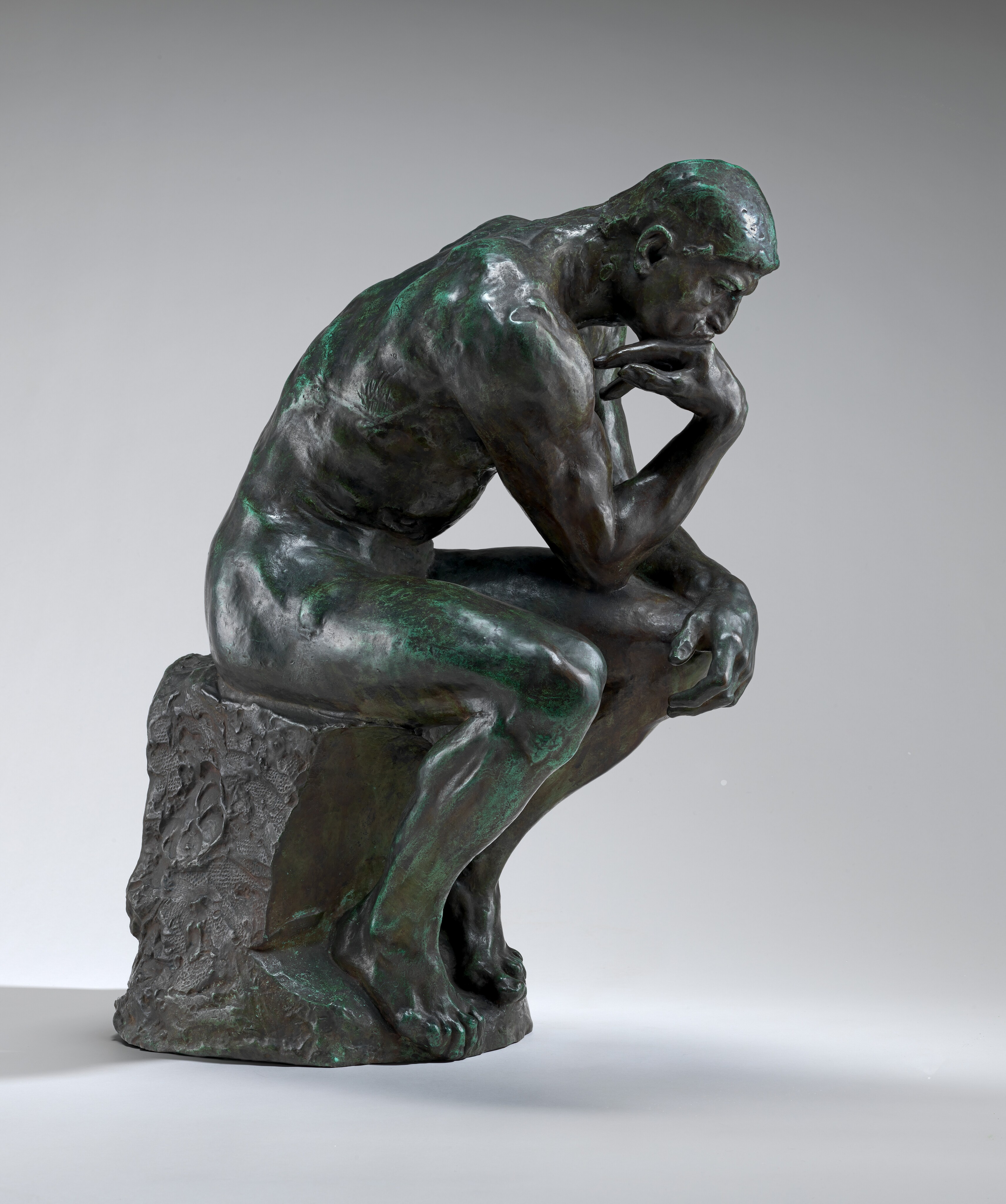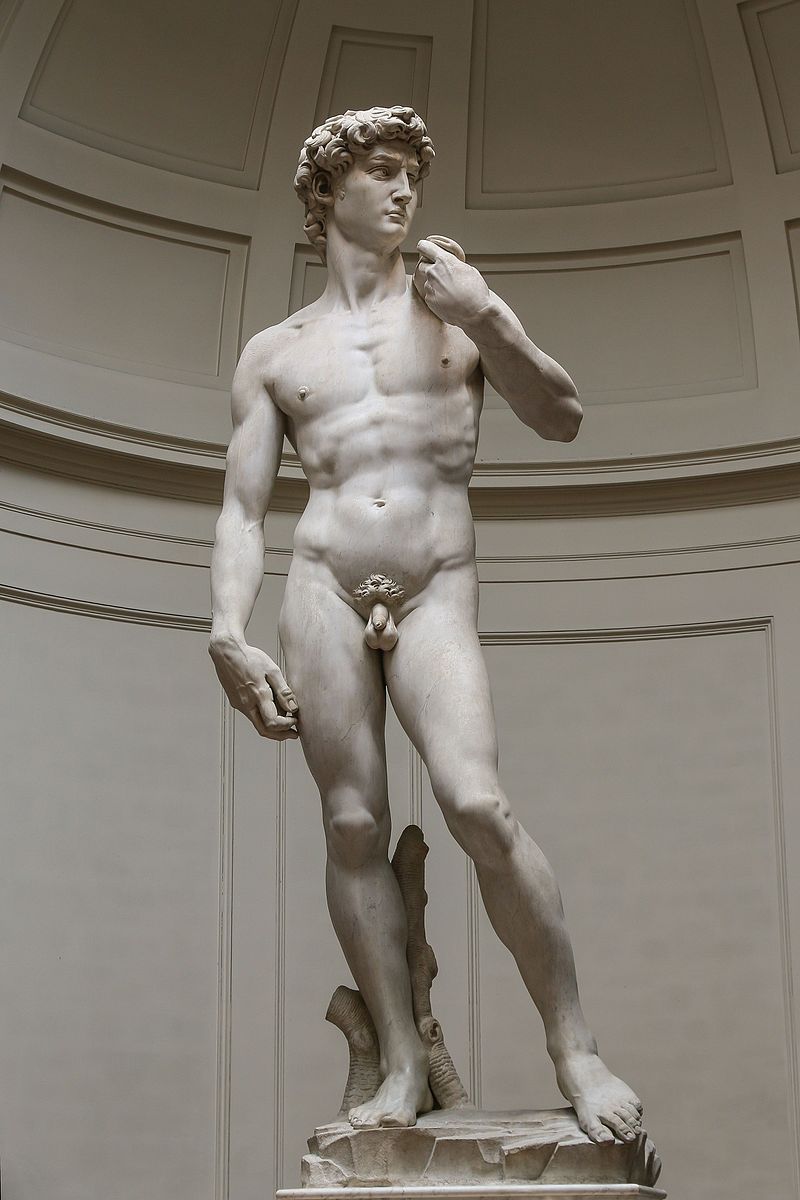
Auguste Rodin - La Penseur (The Thinker)

Rodin's "The Thinker" is often interpreted as a representation of thought and contemplation, symbolizing the quest for knowledge and understanding of the world around us. The sculpture depicts a nude man in a pose of deep thought, with a hunched and introspective posture that suggests an individual immersed in deep questions and reflections about life, the universe, and their own place in them. This universally recognized expression of “deep thought” has become the iconic symbol of thinking; images of the sculpture in profile are often used to indicate philosophy and other practices of contemplation or introspection.
Michelangelo - David

This iconic sculpture from the Renaissance period embodies the philosophy of humanism, emphasizing the beauty and potential of the human form. Michelangelo's statue of David embodies Renaissance ideas about "the dignity of man," reflecting the optimistic view of human nature and potential prevalent during that era. The statue symbolizes also the belief in human excellence and the capacity to create lasting works of greatness. Michelangelo's David also represents the Renaissance belief that humans can shape their own lives and achieve greatness if they will it. Michelangelo was influenced by Renaissance philosophers such as Marsilio Ficino and Pico della Mirandola, who wrote about the dignity of man and the power of human beings to shape their own nature.